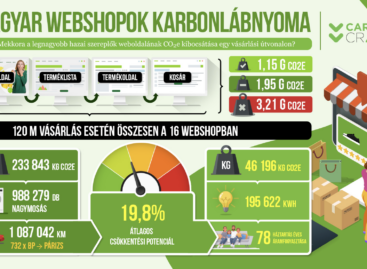Eurozone inflation rises to highest level since July in December
The eurozone inflation rate rose for the third consecutive month in December, according to the first estimate based on preliminary data published by the European Union’s statistical office, Eurostat, on Tuesday.
 According to Eurostat’s flash estimate, the annual inflation rate in the eurozone rose to its highest since July in December 2024, rising to 2.4 percent, as expected, from 2.2 percent in November.
According to Eurostat’s flash estimate, the annual inflation rate in the eurozone rose to its highest since July in December 2024, rising to 2.4 percent, as expected, from 2.2 percent in November.
On a monthly basis, the price index rose by 0.4 percent in December after a monthly decrease of 0.3 percent in November.
The highest inflation rate was in Croatia, 4.5 percent after 4.0 percent in November, and in Belgium, 4.4 percent after 4.8 percent in November. The lowest inflation rate was in Ireland, 1.0 percent after 0.5 percent in the previous month, in Lithuania, 1.4 percent after 1.1 percent, and in Luxembourg, 1.6 percent after 1.1 percent.
In the eurozone’s largest economies, inflation rose to 2.8 percent in Germany from 2.4 percent in November, to 1.8 percent from 1.7 percent in France, and to 2.8 percent from 2.4 percent in Spain. In Italy, however, it slowed to 1.4 percent from 1.5 percent.
Meanwhile, core inflation, which excludes energy, food, alcohol and tobacco, remained stable at 2.7 percent. Core inflation rose 0.5 percent month-on-month in December after a 0.6 percent monthly decline in November.
Services prices rose the most, with an annual rate of 4.0 percent in December, slightly higher than the 3.9 percent in November. The food, alcohol and tobacco price index rose by 2.7 percent in both November and December.
The non-energy industrial goods price index fell slightly to 0.5 percent in December from 0.6 percent in November.
The development of energy prices changed significantly, from minus 2.0 percent in November to plus 0.1 percent in December, indicating a transition from deflation to mild inflation in this sector.
Related news
The Hungarian Confederation of Economic Workers also spoke out regarding the inflation data
🎧 Hallgasd a cikket: Lejátszás Szünet Folytatás Leállítás Nyelv: Auto…
Read more >K&H: what does child inflation show?
🎧 Hallgasd a cikket: Lejátszás Szünet Folytatás Leállítás Nyelv: Auto…
Read more >The forint may remain relatively strong, even permanently
🎧 Hallgasd a cikket: Lejátszás Szünet Folytatás Leállítás Nyelv: Auto…
Read more >Related news
Investment dumping is coming in the food industry
🎧 Hallgasd a cikket: Lejátszás Szünet Folytatás Leállítás Nyelv: Auto…
Read more >It turns out which online food ordering platform websites are the most sustainable
🎧 Hallgasd a cikket: Lejátszás Szünet Folytatás Leállítás Nyelv: Auto…
Read more >Customers are also looking for the record-breaking iPhones in refurbished versions
🎧 Hallgasd a cikket: Lejátszás Szünet Folytatás Leállítás Nyelv: Auto…
Read more >






